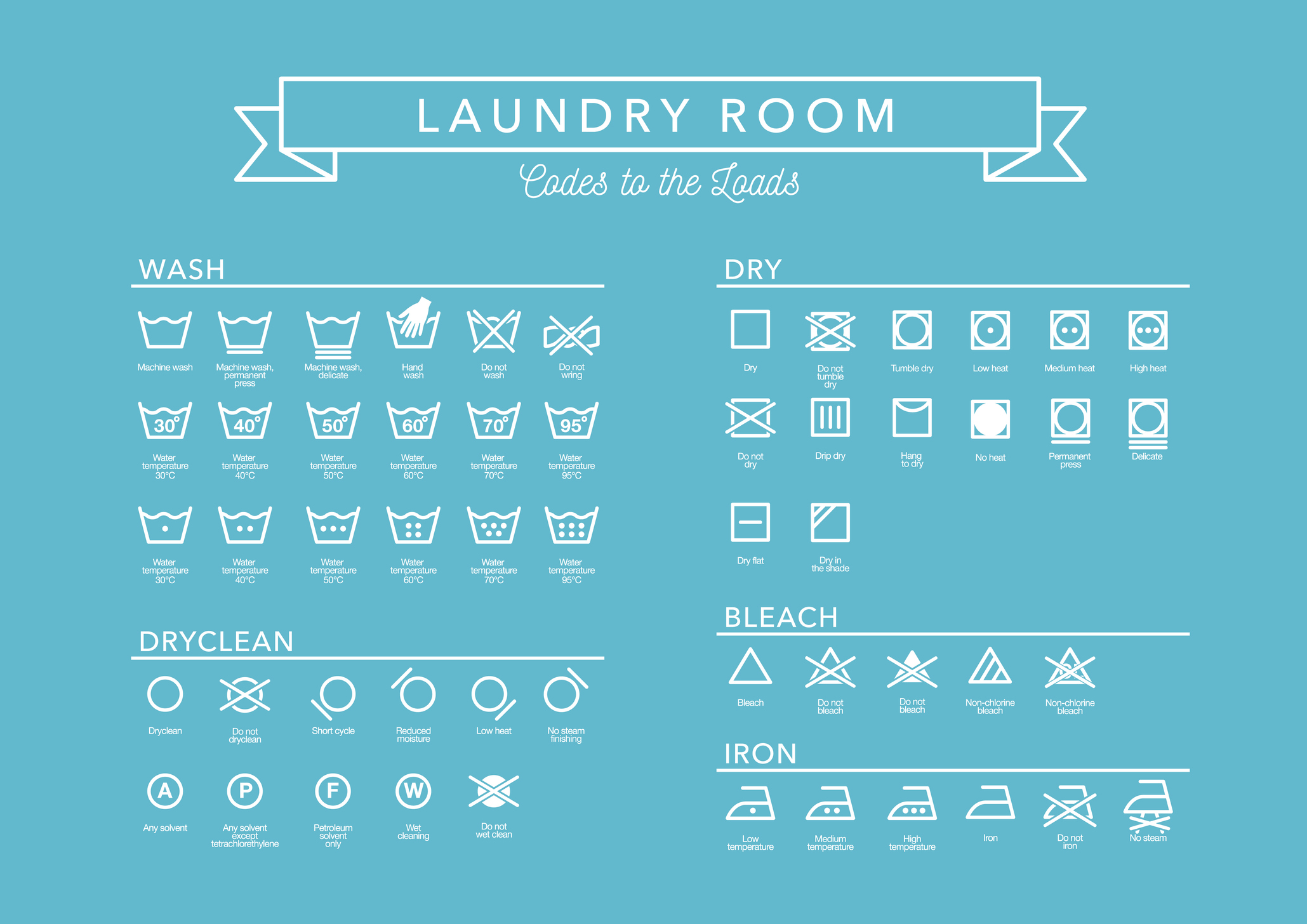By
ResLife
Posted 11 months ago
Thu 09 Jan, 2025 12:01 AM
... It's now over to the wash.
There are a few things to think about when it comes to doing a load of laundry to avoid any damaged, shrunk or stained clothing. If you're not sure where to start, we've got the complete lowdown for you...
What do all the symbols mean? 👕
To get started, if you want to keep your items in the best condition, it's worth paying attention to your labels. This will give you an idea of what sort of wash it needs so you avoid a laundry disaster. Most everyday loads don't require much thought but it's always helpful for when you're unsure.
Below is a breakdown of the symbols you are likely to come across and what they mean (click the image for a closer look)

What temperature is best? 🌡
As a rule, 30 is suitable for an everyday wash. It's also better for the environment to wash at a lower temperature as 90% of the energy consumption comes from heating the water. If you have the time, an eco wash is even better as you’re using less water at a lower temperature than most settings but you’re in for a longer wash time to get the same level of cleaning.
For grubbier clothes such as sports kits, you're best choosing a slightly higher temperature such as 40-60 to ensure you get any stubborn stains out. The same goes for bedding and towels, you might want to choose a 40 wash to give it a good, thorough clean.
How do I choose detergent? 🧼
First things first, you will need to get washing tablets opposed to powder for Circuit machines. Of course, the student budget only stretches so far so you'll want to make sure you're shopping on a budget and looking at the number of washes (tablets) to price. Places like ALDI and Lidl offer great dupes for the more expensive, branded products.
Another thing to consider is whether you go for bio or non-bio tablets. Here's the difference:
- Bio: Biological detergents contain enzymes, which are very effective at breaking down dirt into smaller pieces. This means it's easier to get rid of stubborn stains.
- Non bio: Free from biological enzymes, non-bio tabs are free from harsh chemicals meaning your delicate items are less likely to be damaged and they will cause less irritation to those with sensitive skin.
Wanting an eco-friendly option? Reusable products such as the eco egg are ideal for the more environmentally conscious as it replaces laundry detergent and fabric conditioner with one, reusable container.
Common Laundry Mistakes 🚫
It's all well and good knowing how to wash but if you don't know what can go wrong, you could be heading to a classic laundry mishap. Here are the core four to steer clear of...
- Washing at a too high a temperature Want clothing suitable for a borrower? If you wash items on a hot wash, it can cause your clothes to shrink.
- Mixing new, bright clothes with your load Any new item that hasn't yet been through a few washes will likely bleed, especially if it's a bright colour like red or blue. Either make sure these are in with a dark wash or wash them separately for a few washes first.
- Washing whites and darks The age-old classic. Unless you want to walk around with off-white or pastel-coloured t-shirts, separate your load into darks and whites.
- Check your pockets Easily done but always make sure to check and empty any pockets before adding them to the machine, tissues included! The last thing you need is a rogue pen leaking all over your fresh washing 🤦♀️
Finally, once your load is done, don't forget to clean the filter in the dryer before you set it going!






